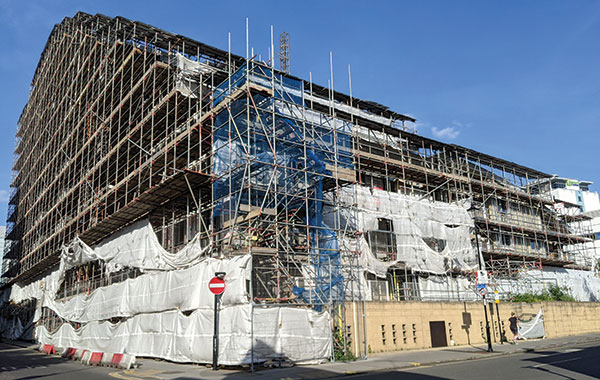Filter by
You must be a CTBUH Member to view this resource.
Grenfell Tower
Grenfell Tower, Grenfell House
Building
Completed
1974
Residential
All-Concrete
67 m / 220 ft
24
120
You must be a CTBUH Member to view this resource.
Completed
Recladding
You must be a CTBUH Member to view this resource.
29 October 2017 - Event
29 October 2017 - Event

16 May 2023
Peter Apps
On 14 June 2017, a small kitchen fire at Grenfell Tower, London quickly enveloped the entire 24-story building, aided by combustible cladding material affixed to...

07 February 2023
Developers have six weeks to sign a government contract to fix their unsafe buildings that are at high risk of flammable cladding from the past...

16 May 2023
Peter Apps
On 14 June 2017, a small kitchen fire at Grenfell Tower, London quickly enveloped the entire 24-story building, aided by combustible cladding material affixed to...
ChiralJon.jpg)
31 January 2019
Abhishek Chhabra, Thomas Bell-Wright International Consultants
Substantial tall-building façade fires have continued to take place, even after the world was shocked by the Grenfell Tower tragedy in London in 2017. Much...

30 April 2018
Grzegorz Sypek, SMAY Group
Recent, tragic high-rise fires have underscored a fundamental issue: the lack of protected escape routes in tall buildings. As we build a greater volume of...

30 April 2018
Jules Pipe, Greater London Authority
In the past decade, London has grappled with growing pains and critical questions about how its urban landscape should be developed. More than 200 buildings...

07 February 2023
Developers have six weeks to sign a government contract to fix their unsafe buildings that are at high risk of flammable cladding from the past...

09 November 2022
A closing statement delivered 7 November 2022 to the 300-day long inquiry into the 2017 tragedy at Grenfell Tower ranked the practice in the top...

20 September 2022
The Building Safety Programme Monthly Data Release from the Department of Levelling up, Housing and Communities has shown that there are still over 300 high-rise...
GJMarshy_ccby-sa.jpg)
31 August 2022
Concern over single-stair residential skyscrapers meeting regulations for fire safety has been prompted by the Building Regulations Advisory Committee (BRAC), and the Department for Levelling...

07 June 2022
Cladding of the type used on Grenfell Tower is to be banned from all new buildings in England. Ministers have announced plans to outlaw the...
.jpg)
14 May 2021
Grenfell Tower may soon be taken down, according to a letter posted on social media by the United Kingdom’s Ministry of Housing, Communities and Local...

15 February 2021
The government is facing a backlash from its own MPs after announcing a £3.5 billion (US$4.8 billion) fund to fix dangerous cladding on high-rise buildings...

25 January 2021
Around 95 percent of the highest risk buildings with unsafe cladding similar to that found on Grenfell Tower have been made safe or have work...

10 November 2020
Four employees of the company that manufactured and sold the combustible cladding used on the Grenfell Tower are refusing to give oral evidence to the...

20 April 2020
Tens of thousands of people are living in high-rise blocks with Grenfell Tower-style flammable cladding that need 24-hour fire patrols, it has been revealed. An...
29 October 2017
One day before the CTBUH 2017 Australia Conference, delegates convened at the University of Sydney facilities in Darlington for the Fire Performance of Façades workshop.
29 October 2017
The Annual Leaders Meeting was held the day before the start of the CTBUH 2017 Australia Conference, bringing together the Council’s leaders.
Subscribe below to receive periodic updates from CTBUH on the latest Tall Building and Urban news and CTBUH initiatives, including our monthly newsletter. Fields with a red asterisk (*) next to them are required.
View our privacy policy